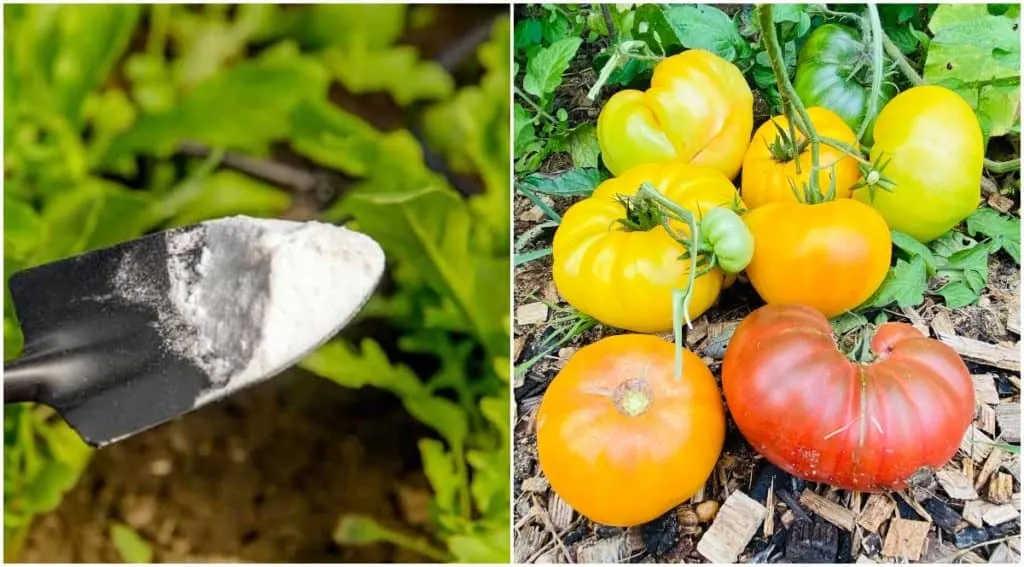
Growing tomatoes is an exciting gateway into vegetable gardening. But, you may face a few hiccups along the way.
There are many life hacks out there suggesting cure-alls for your tomato problems, from aspirin to eggshells, to Epsom salt, to used coffee grounds.
One of them is baking soda.
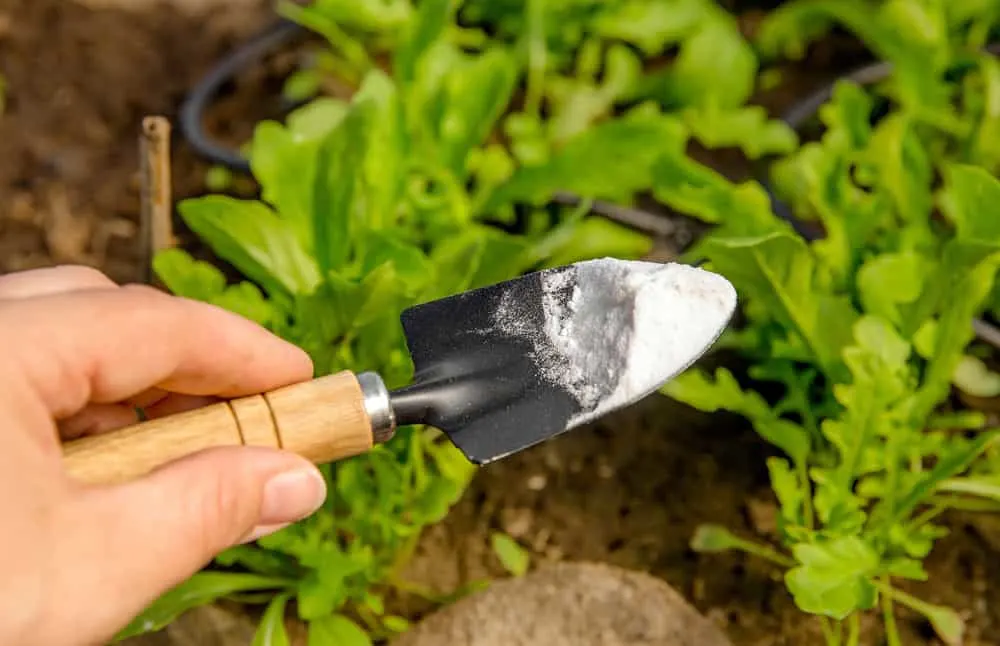
This kitchen staple promises a myriad of solutions for common garden problems and tomatoes aren’t left out. From preventing a few diseases and killing off pests, you’ll believe you can’t go wrong with baking soda. But there also are few problems that this gardening hack just can’t fix.
According to the science, these are the uses that do and definitely don’t work for tomato plants.
3 Baking Soda Uses That Work
1. Prevents Blight
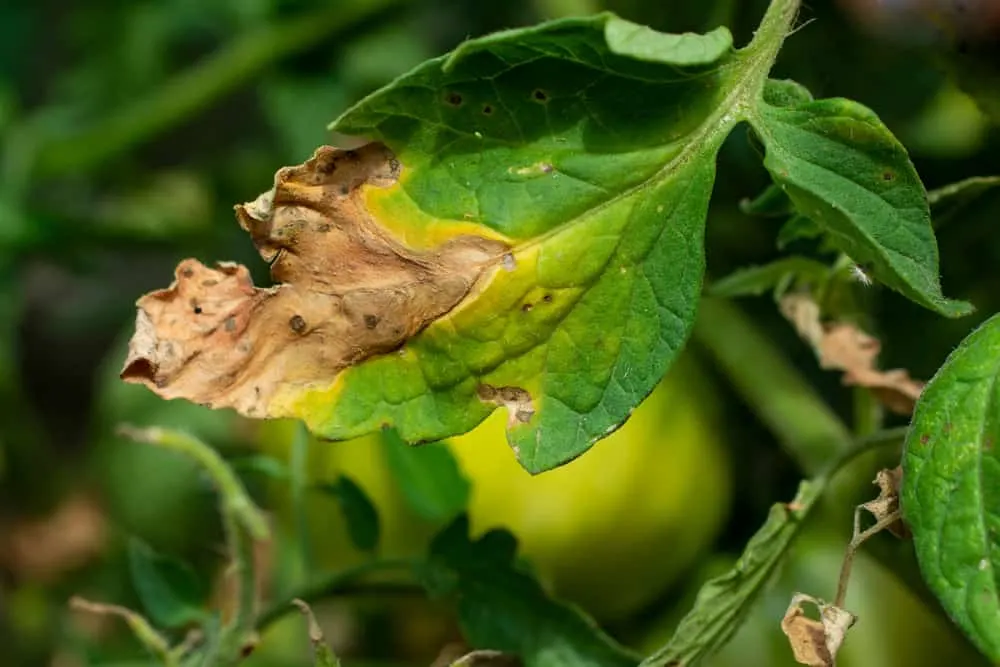
Seasoned tomato growers are no strangers to blights of all kinds. These are various diseases usually caused by bacterial and fungal infestations. Tomatoes are quite susceptible to these diseases, specifically early and late blight.
Blight symptoms are easy to notice and should be dealt with immediately.
Early blight symptoms typically start showing up just as the first tomato fruits appear. You’ll know it’s early blight when you see small, brown spots on lower-lying leaves. These lesions begin looking like targets with a yellow halo as it spreads. Early blight kills off foliage, leaving your tomatoes vulnerable to sun-scald.
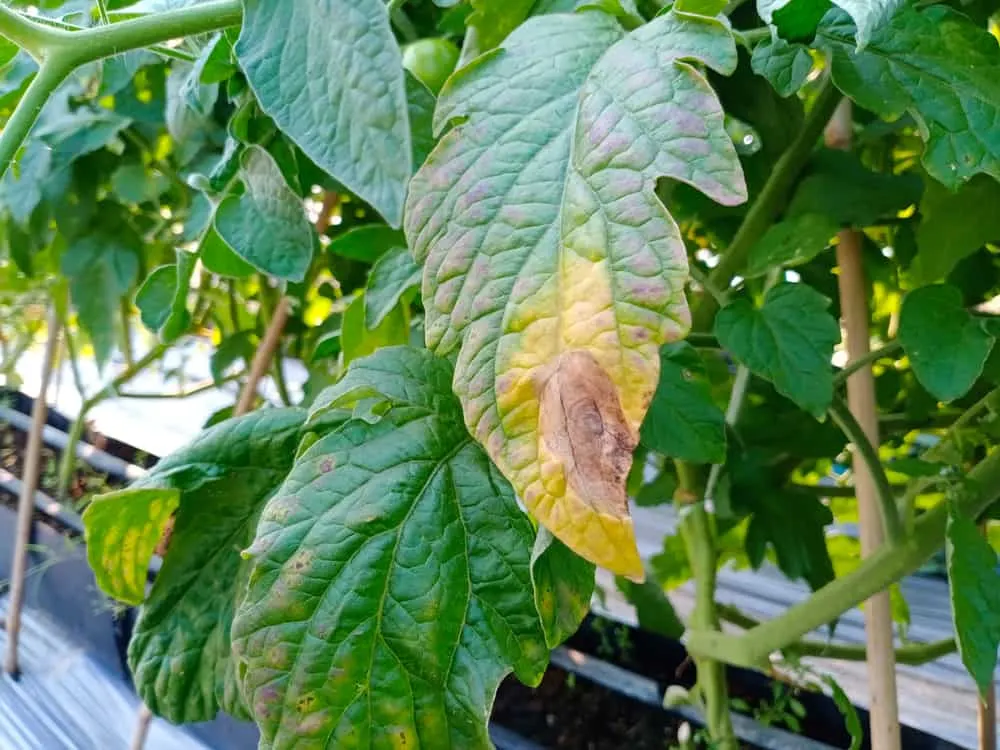
Late blight, despite the name, can affect your tomato plant at any point during the growing season. Late blight is typically the most feared tomato disease. It was responsible for the Irish potato famine during the 1840s.
You’ll identify late blight by the dark lesions on the outer edges of lower, older leaves. These brown spots become purple-black as it ages, and a white mold appears on the underside of leaves. Late blight goes on to affect your tomato plant stems and will eventually kill off your entire plant.
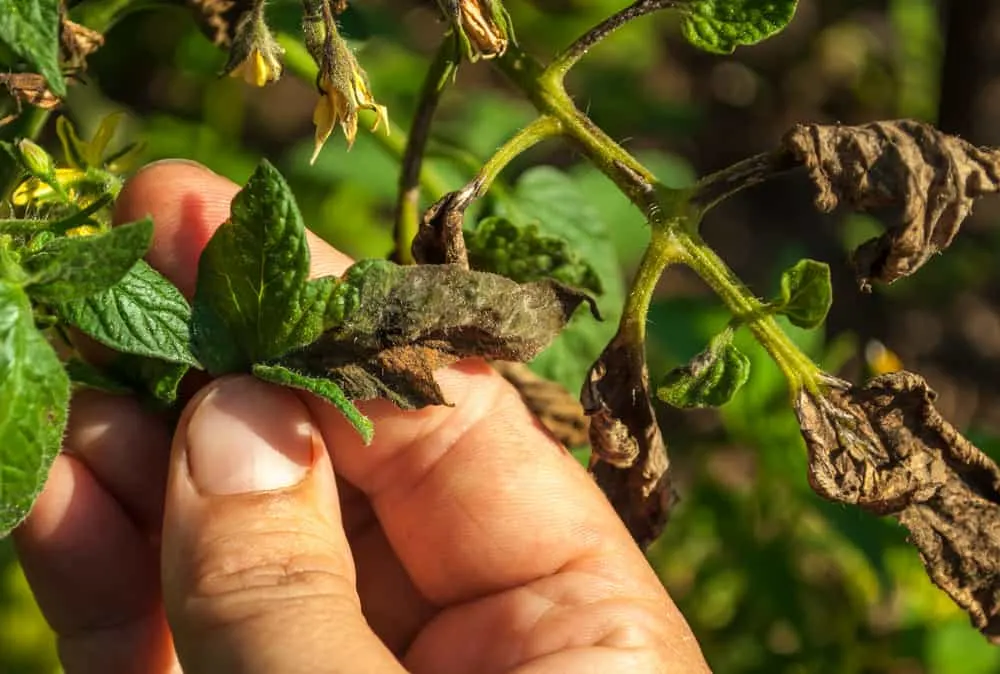
If you’re worried about blights taking over and killing your tomatoes, then baking soda is here to save the day.
Its alkaline properties are the key. By spritzing a baking soda solution on your tomato plants, the surface becomes more alkaline, creating an unsuitable environment for blight to take hold. You’ll prevent any blight from growing or stop any spread dead in its tracks.
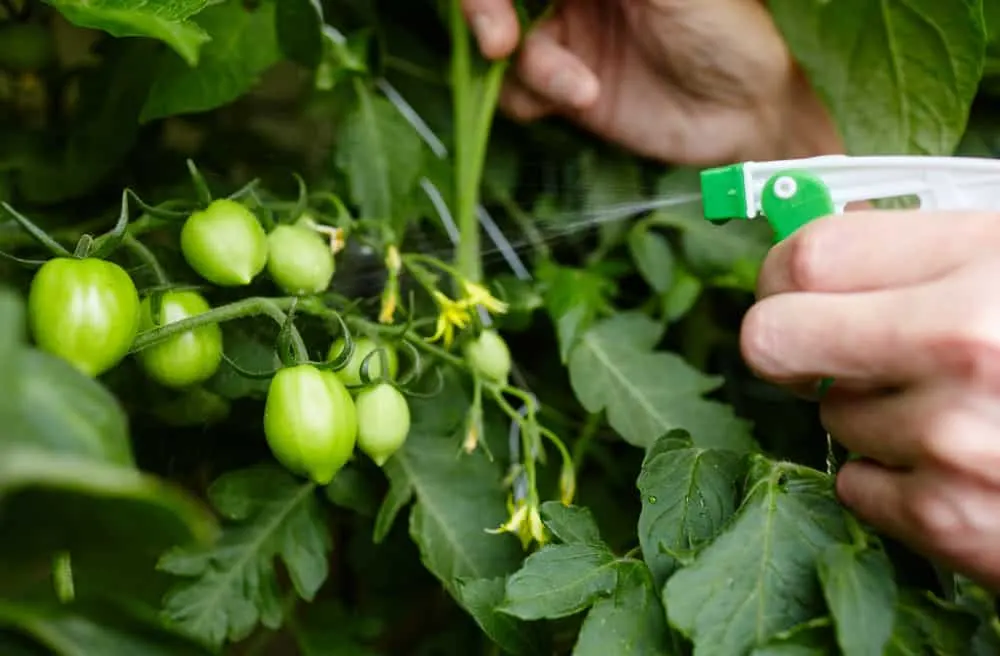
But, if you have a full infestation on your hands, unfortunately, baking soda can’t help. It prevents the spread of this disease, but cannot treat it once it has already taken hold.
2. Kills Pests
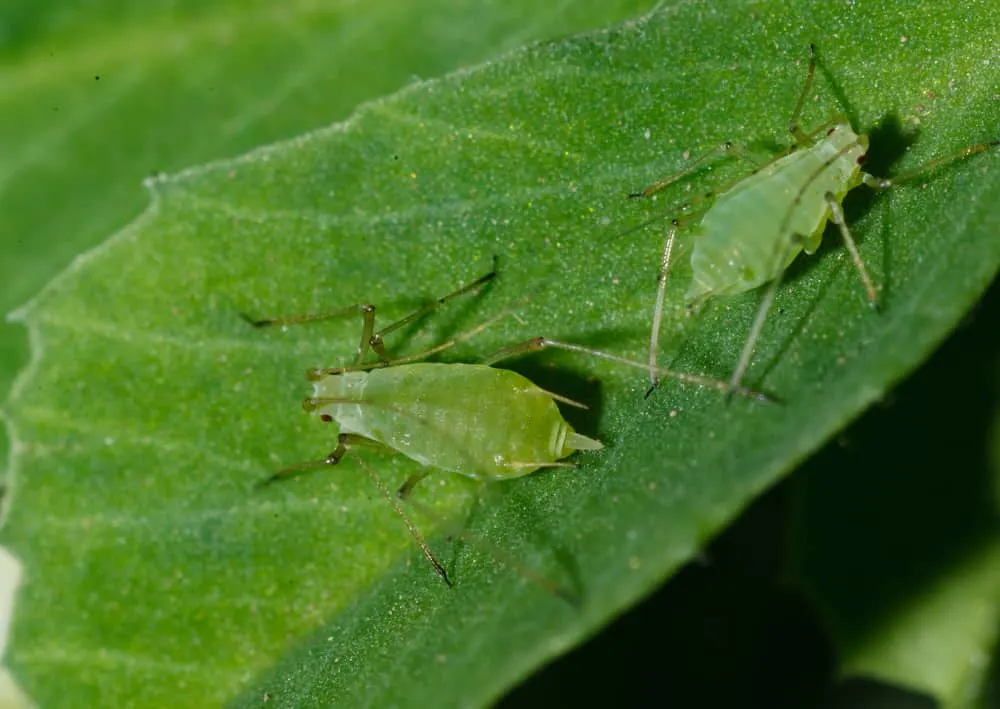
As easy as tomatoes are to grow, they’re quite susceptible to a handful of pests.
Aphids (of course), slugs, snails, and other soft-bodied pests love tomatoes. There are many ways to kill off these pests using pesticides. But why not take a natural route and use an ordinary household product?
Yes, baking soda can really kill off these pesky bugs, saving your tomatoes for just you.
There are several ways you can apply baking soda to your tomato plants. You can sprinkle it around the base of your tomatoes, or create a diluted baking soda spray. You could also opt to place it in traps around your plants as bait. This will work well for snails and slugs.
If you’ve got a snail and slug problem, chances are you’ve already set up traps and bait around your tomatoes. You can add some baking soda to these, which kills the slugs and snails the second they come into contact with it.
Always be cautious though when applying baking soda to your plants. Too much baking soda is toxic to tomatoes and you might accidentally kill them along with the pests.
3. Prevents Powdery Mildew
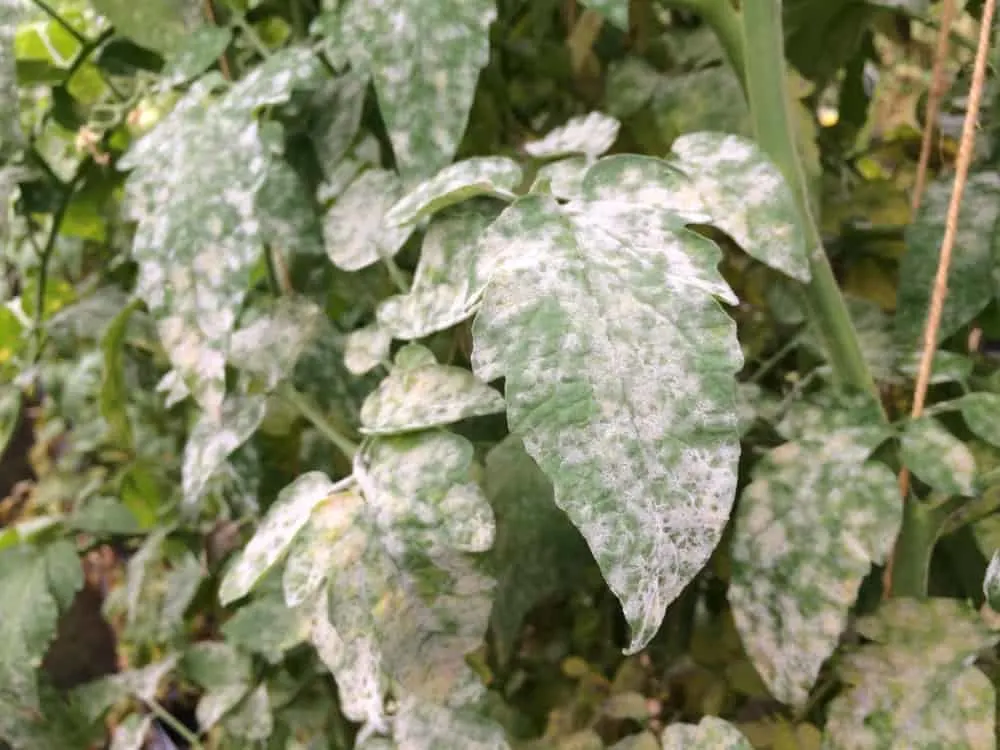
Powdery mildew is another fungal disease that affects tomato plants. If a white-gray powder-like substance coats your tomato leaves and stems, then you’ve got a powdery mildew problem.
This mold isn’t fatal but the consequences of it are. It can spread to flowers which prevents them from fruiting. The coating on the leaves also blocks the sun, preventing photosynthesis.
Infected plants eventually weaken and if the disease is left unattended, it will result in defoliation.
This disease is difficult to control but easy enough to prevent with our trusty kitchen ingredient, baking soda. A simple solution of water, baking soda, and non-detergent dishwashing liquid soap are all you need.
Mix one gallon of water, half a teaspoon of your dishwashing soap, and one tablespoon of baking soda in a large jug or bottle. This will help dilute the baking soda enough that it won’t be toxic for your plants. Next, throw some into your trusty spray bottle and you’re good to go.
Spray your tomatoes on cloudy days to prevent sun-scald and burning of the foliage. It’s safe enough to spray on all the leaves and stems, including their undersides.
This mixture is also effective for pest control and blight prevention.
3 Baking Soda Uses That Don’t Work
1. Makes Tomatoes Sweeter
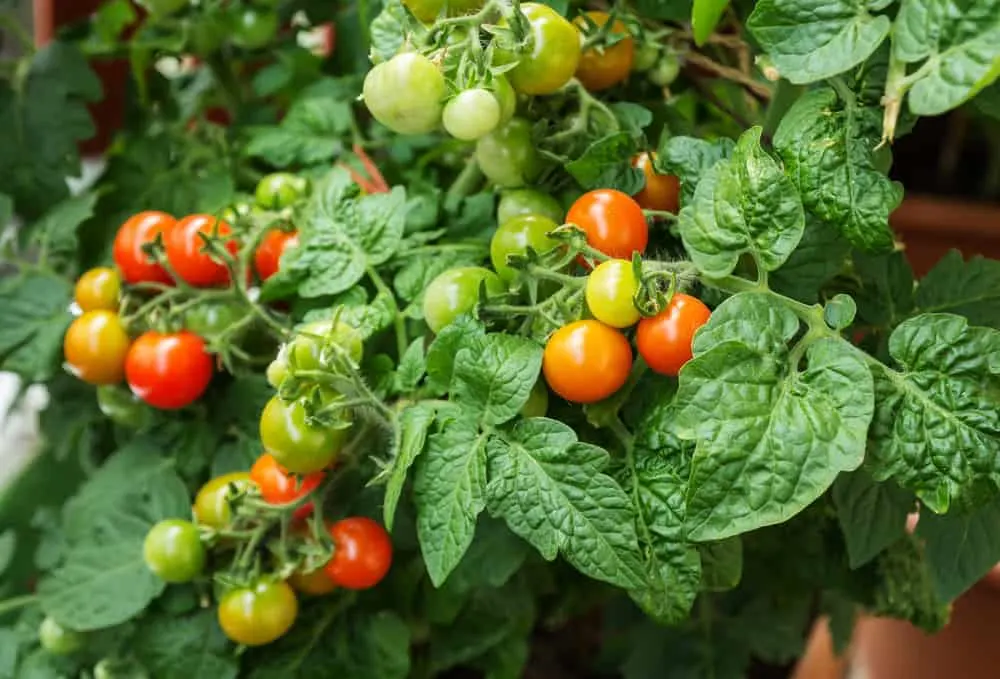
Baking soda is great in and out of the kitchen. Clearly. However, as much as we want it to fix all our gardening problems, some claims just aren’t true.
The claim that baking soda can make your tomatoes sweeter is one of them.
The idea springs from the fact that baking soda is alkaline. If you add it to your soil, you could reduce its acidity. With that comes sweeter, less tart tomatoes.
Unfortunately, this just isn’t true.
Firstly, the acidity of your soil doesn’t majorly affect the flavor of your tomatoes. Certain environmental factors can play a role but the most important influence on flavor is the variety of tomatoes chosen. If you’re looking for sweet tomatoes, opt for cherry tomatoes or plum tomatoes.
Secondly, the amount of baking soda you’d need to mix into your soil to make any sort of pH change would be highly toxic to your tomatoes, negating the point of adding it altogether.
2. Improves Flowering
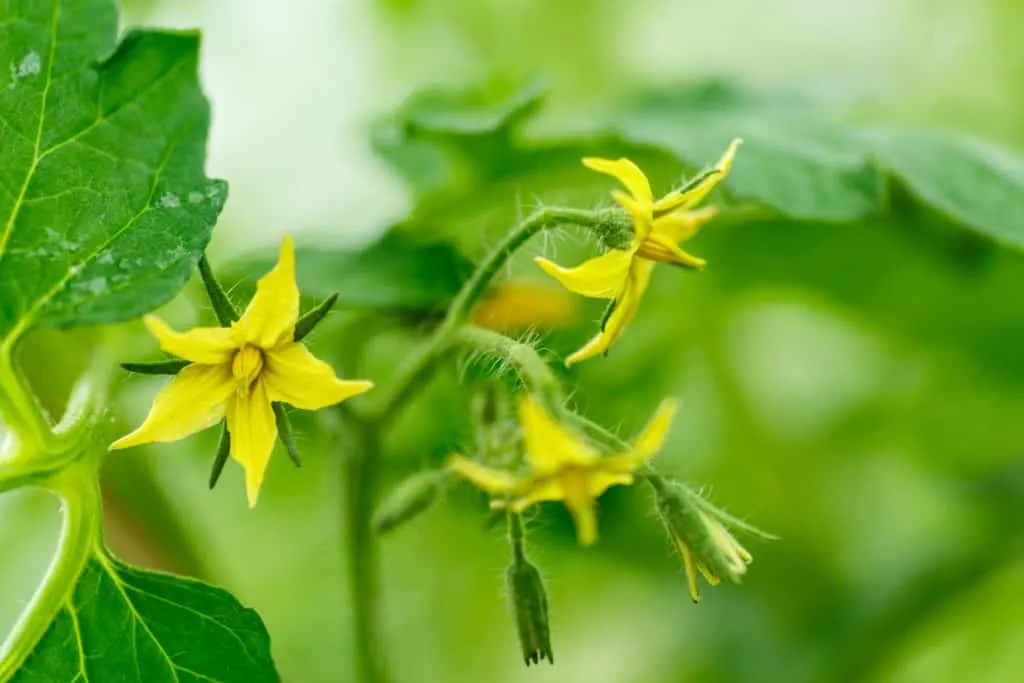
Some believe that adding baking soda to your soil will help your tomato plants flower, especially if your tomato plants have a sodium deficiency.
However, sodium deficiencies are very rare. And, once again, adding too much baking soda to the soil is toxic and will kill your plant.
Over and above that, sodium is a micronutrient. This means it doesn’t play a major role in the overall health of your tomatoes. If you’re adding sodium when you shouldn’t, you’ll end up with a micronutrient imbalance, which will do more harm than good.
The best way to ensure the nutritional health of your tomatoes is to fertilize them regularly, using the correct fertilizer. That way you’ll never have to worry about nutrient deficiencies.
3. Kills Weeds
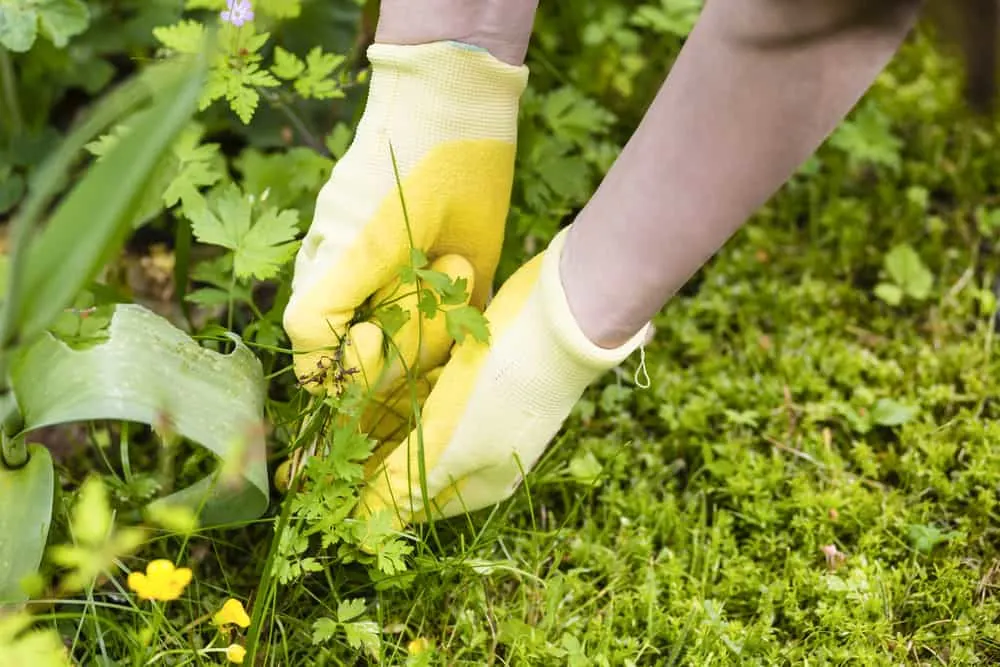
Baking soda does kill weeds. But before we get excited – it isn’t useful in your garden, especially when it comes to tomatoes.
There are high levels of sodium in baking soda, which is toxic to plants. Dumping it on weeds will smother them and kill them off. Unfortunately, though, baking soda is water-soluble. So, when you water your tomatoes or when it rains, it will run off the weeds and into the soil.
The high levels of sodium will negatively affect your tomatoes and all other plants around them. Too much sodium and your plants could die off. Avoid using heaps of pure baking soda if you’re looking to keep your plants alive.
Baking soda is a great product in and out of the kitchen. You’ll never have a pest or mildew problem on your tomatoes again.
But there are a few caveats when using this natural product. It’s not a fix-all agent. You may kill off pests and prevent blight and other fungal diseases. But it won’t make your tomatoes sweeter or flower more. And while it does kill weeds, you run the risk of damaging your tomatoes in the process. Always use baking soda sparingly and carefully.
